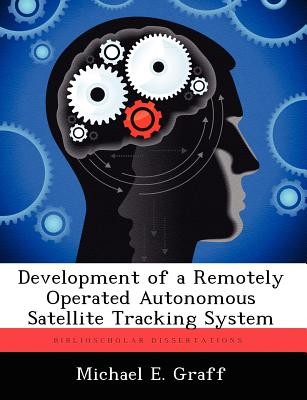
- We will send in 10–14 business days.
- Author: Michael E Graff
- Publisher: BiblioScholar
- ISBN-10: 1249593077
- ISBN-13: 9781249593072
- Format: 18.9 x 24.6 x 0.8 cm, softcover
- Language: English
- SAVE -10% with code: EXTRA
Development of a Remotely Operated Autonomous Satellite Tracking System (e-book) (used book) | bookbook.eu
Reviews
Description
AFIT is currently developing a capability to remotely and autonomously track LEO satellites using commercial telescopes. Currently, the system is capable of open-loop tracking based on Two-Line Element sets (TLEs) downloaded from NORAD's space object catalog. The ability to actively track using a closed-loop control system would allow tracking of satellites which deviated from the published TLEs along with providing some information about the object's new orbital elements. To accomplish closed-loop tracking, the object is imaged by a digital camera connected to a wide field-of-view (WFOV) spotting scope. Software was developed to provide azimuth and elevation inputs in order to center the object within the WFOV. Pixel centroid location along with telescope azimuth and elevation commands can be recorded for use in estimating updated orbital elements. This thesis documents the current efforts towards achieving a remotely operated autonomous tracking optical system. Future application could include networking to other geographically-separated telescopes to allow simultaneous observation of the same space objects to accurately document orbital maneuvers.
EXTRA 10 % discount with code: EXTRA
The promotion ends in 20d.17:53:30
The discount code is valid when purchasing from 10 €. Discounts do not stack.
- Author: Michael E Graff
- Publisher: BiblioScholar
- ISBN-10: 1249593077
- ISBN-13: 9781249593072
- Format: 18.9 x 24.6 x 0.8 cm, softcover
- Language: English English
AFIT is currently developing a capability to remotely and autonomously track LEO satellites using commercial telescopes. Currently, the system is capable of open-loop tracking based on Two-Line Element sets (TLEs) downloaded from NORAD's space object catalog. The ability to actively track using a closed-loop control system would allow tracking of satellites which deviated from the published TLEs along with providing some information about the object's new orbital elements. To accomplish closed-loop tracking, the object is imaged by a digital camera connected to a wide field-of-view (WFOV) spotting scope. Software was developed to provide azimuth and elevation inputs in order to center the object within the WFOV. Pixel centroid location along with telescope azimuth and elevation commands can be recorded for use in estimating updated orbital elements. This thesis documents the current efforts towards achieving a remotely operated autonomous tracking optical system. Future application could include networking to other geographically-separated telescopes to allow simultaneous observation of the same space objects to accurately document orbital maneuvers.


Reviews